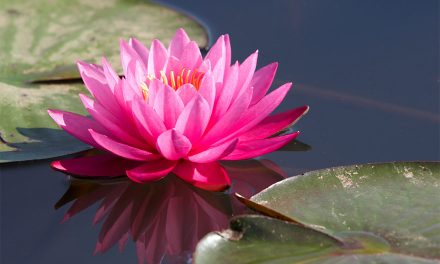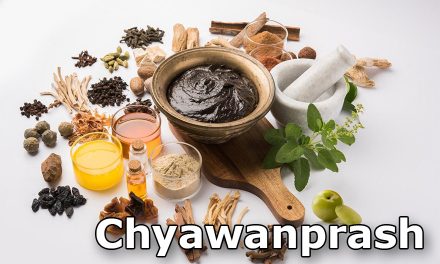Yoga is the scientific method of reaping health benefits described in Vedas, which includes various physical actions along with those to regulate and control breathing. Pranayam, or regulation of breathing, yogasana and other light exercises are done in order to gain full benefits.
These are of various types and are done in different methods, which includes expansion and contraction of different muscles of the body at the physical level. It purifies blood and circulates it all over the body and every part of the body gets energy. All the internal secreting glands become active and balance the metabolism of the body.
This increases the resistance power of the body and the person becomes healthy and disease free. Beyond the physical level, the consciousness gets strength, mental concentration increases and the person develops determination power. It overcomes mental stress and develops optimistic thinking. Therefore, pranayam is a method of energy therapy.
Now we will try to analyze acupressure? when we practice Yoga, pranayam and other light asana in direct form then how do we get the benefits of acupressure indirectly?
Acupressure is also a method of treatment described in the Vedas,which includes pressing the reflex points located at different places on the body in order to relieve the disease. This is also a natural treatment method based on energy, which was developed in China and other eastern countries. Now it has been extended beyond the reflex points.
From treatment point of view, every point on the body from nail to head is very important, it is point of treatment, but only important points have been marked for the purpose of treatment. Direct or indirect pressure exerted on these points has an impact on the related organ and balances the five elements present in that particular organ. It increases the disease fighting capacity of the person. A healthy person never falls ill but an ill person becomes healthy.
A particular point can be pressed in two ways:
1. Direct
like thumb, finger, palm or some blunt thing like pencil or seed or small magnet tied with a paper tape etc.
2. Indirect:
a. voluntary actions by creating stress in the muscles or relaxing them.
b. Filling in air in stomach or chest or throwing it out.
These points get stimulated or get pressed due to circulation at local level or contraction. When the points get activated they give benefits of acupressure.
Revered Swami Ramdev Ji Maharaj has advised the people to practice seven types of pranayam, seven types of yogasana and seven light exercises on daily basis. There is no doubt about the benefits obtained from this practice.
When we practice Yoga, pranayam, asana etc. directly then the related points on the body get pressed indirectly and automatically acupressure is done and the practitioner gets all the benefits. Practice of Yoga circulates energy into all parts of the body and keeps the body healthy. It cures disease, strengthens the vital life energy and increases the resistance power. It overcomes mental stress and brings in positive thinking.
Pranayam:
Lot of literature is available on regulation of breathing and the benefits derived from it. From acupressure point of view, it is very beneficial for our health. We should do three basic things before beginning the practice of pranayam”
1. Posture
2. Mudras
3. Chanting Aum
Posture:
We can sit in any posture, Ardhapadmasana is ideal because in this posture, pressure is exerted on genitals and rectum with the help of left ankle and the right ankle exerts pressure on the upper part of the genitals. The Chinese acupressure system relates to CV1 and CV2 respectively. They get stimulated and give the following benefits. Pressure on CV1 increases strength and cures diseases related to the genitals, piles, rectum etc. and balance the energy level.
Pressure exerted on CV2 increases energy, cures the stomach parts and strengthens the kidney.
2. Mudras:
when we make mudras with the hands, for example Dhyan Mudra (it is very beneficial in the practice of pranayam), the tip of index finger is joined with the tip of thumb.
According to acupressure, the tip of right index finger and tip of the thumb in men are respectively north pole and south pole of magnet (it is opposite in case of women). Joining these two tips makes a chakra of magnetic energy, which brings in positive thoughts in the brain and increases concentration.
Thumb denotes brain and its upper part denotes Sahasrar chakra or Madula Plexus and the DU 20 andGV20 points located there are equal to 100 energy points according to Chinese acupressure. When the two tips are joined it balances the energy present in brain. It improves memory, nourishes the neurons of brain and develops positive thoughts, it helps in concentration of mind, overcomes headache, sleeplessness and stress.
3. Chanting Aum:
When we chant ‘Au’ after practice of asana and Mudra, it develops sounds in different shapes, which vibrates every chakra of the body. When the final word ‘m’ is chanted it affects the Madula plexus , which overcomes insomnia, nervous pain, depression, improves memory, helps in concentrating on work, develops positive thinking. Therefore chanting of Aum is useful at physical level and also beyond it.
Practice of asana, Mudra and chanting of Aum should be followed by seven-step pranayam. The first in this order is Bhastrika.
Bhastrika pranayam:
Keep the back, neck, posture absolutely straight, close the eyes, be calm without any stress and breathe in and breathe out deeply (generally inhale for two and half seconds and breathe out in the same duration).
Analysis of Bhastrika pranayam through acupressure, benefits:
when we breathe in deeply, the air is filled in the lungs, they blow and the muscles get expanded. We take in more of oxygen, which purifies the blood. It is a biological analysis but when we look at it from acupressure point of view then we find that expansion and contraction of chest muscles stretch it up to one and half to two and half inches. The main reflex points located on chest are worked and get stimulated.
When these points get stimulated, diseases like asthma, cough, heaviness in chest, heart ache, stomachache, gastric problem, vomiting, diarrhea, cerebral diseases, high blood pressure etc. are cured. The related chakras get activated, which affect the internal secretion glands. It cures diseases related to the respiratory system, circulatory system, heart, speech problems, thyroids, Para thyroid, pituitary glands, nervous system, reproduction system and cerebral system. These systems get strengthened and their functioning gets improved.
In this way we find that acupressure automatically takes place with the practice of Bhastrika pranayam, and we can reap lot of benefits.
2. Analysis of Anulom-Vilom pranayam through acupressure and its benefits: the asana and Mudra are similar to Bhastrika pranayam in this case also. Breathe in through left nostril and breathe out through right nostril. Then breathe in from right nostril and breathe out from left nostril. This is one cycle. The benefits are almost similar to the previous pranayam. Breathing in through one nostril pushes in air to the lungs at greater speed, it maintains body temperature and purifies all the nerves and body. The blood circulation is carried on smoothly.
From acupressure point of view, all the points described in Bhastrika pranayam get stimulated. This gives the benefits as mentioned earlier. Point L1-20 located at the root of the nose gets pressed and cures toothache, nervous problems, cold, respiratory related diseases, nose, constipation, etc.
In this way we can see that acupressure is automatically done through pranayam, which gives multifaceted benefits and the most important point is that it increases the capacity of vital life energy and resistance power of the body.
Regular practice of pranayam, yogasana and light exercises is necessary in order to lead a healthy life. Acupressure can also be done depending on the specific condition for more benefits. Consult your doctor before beginning the practice of difficult asana.









